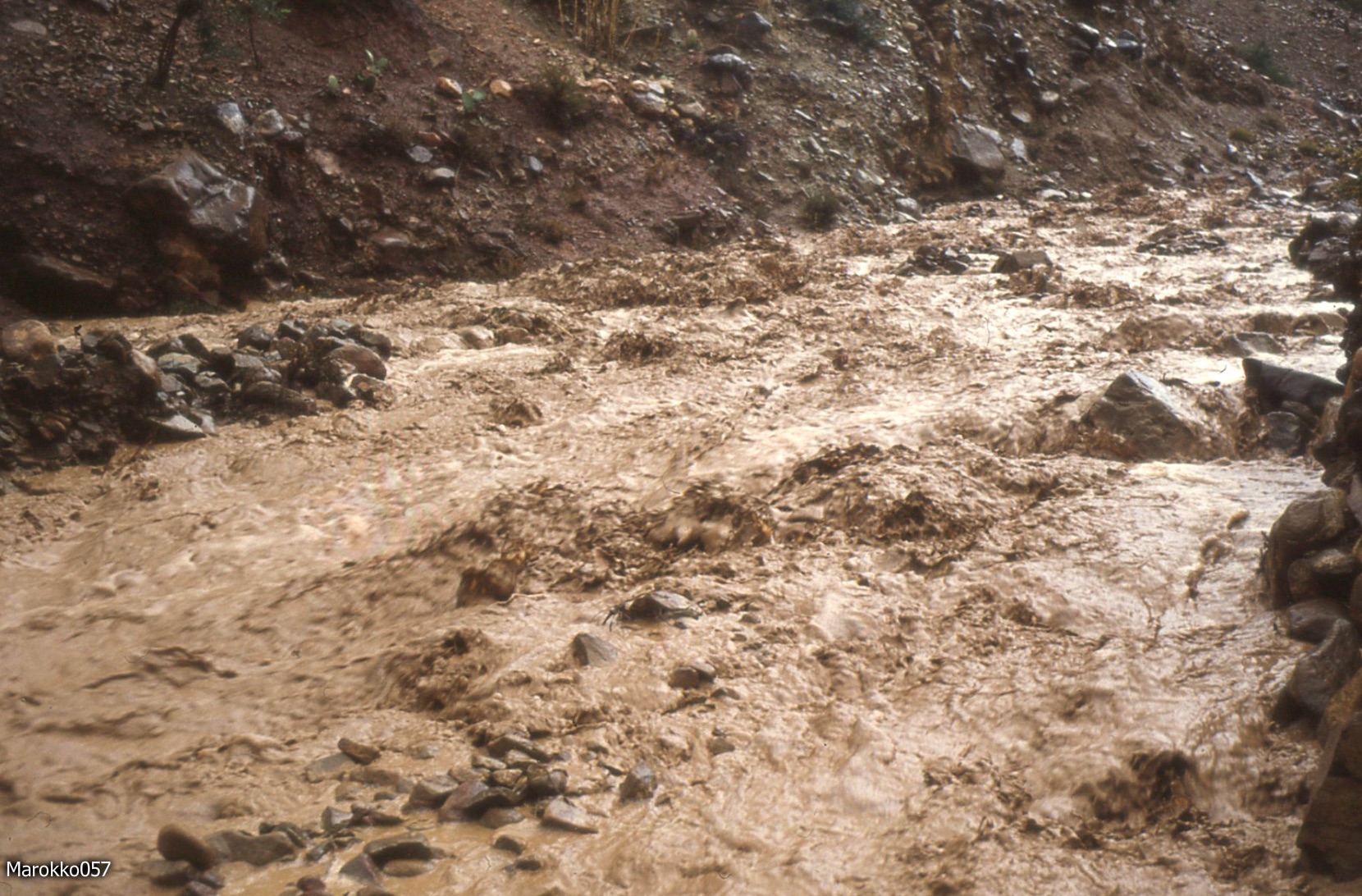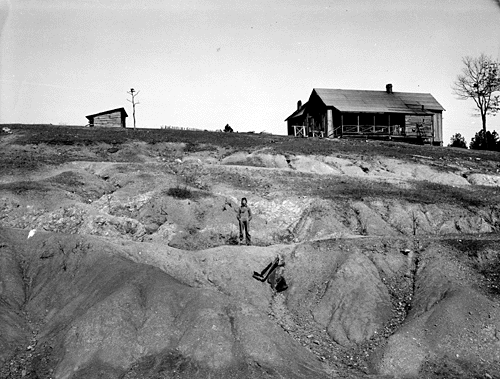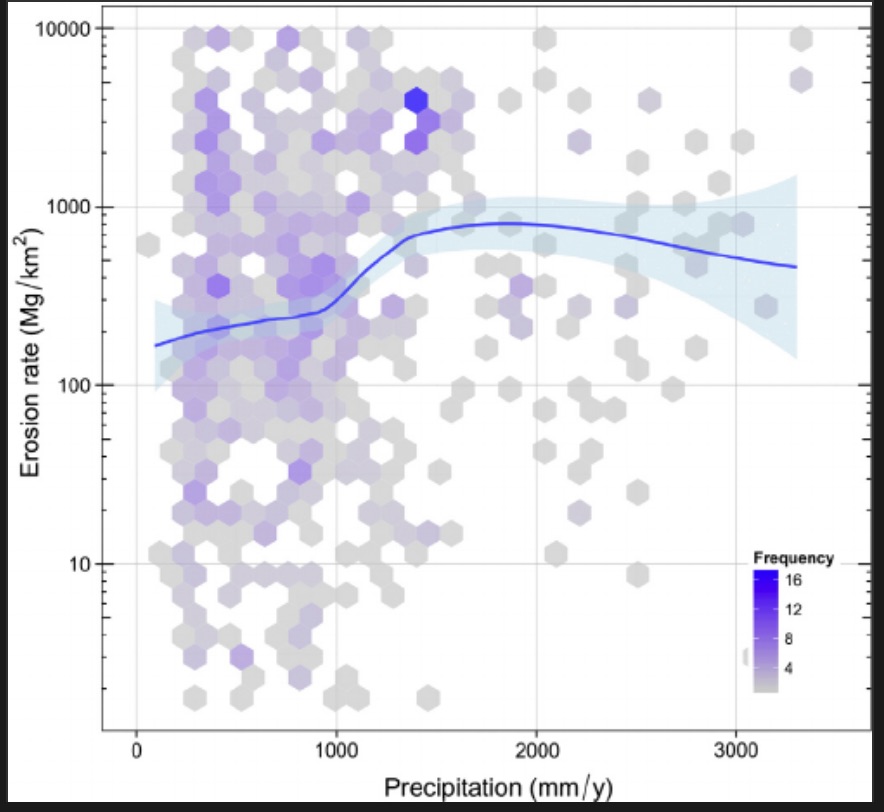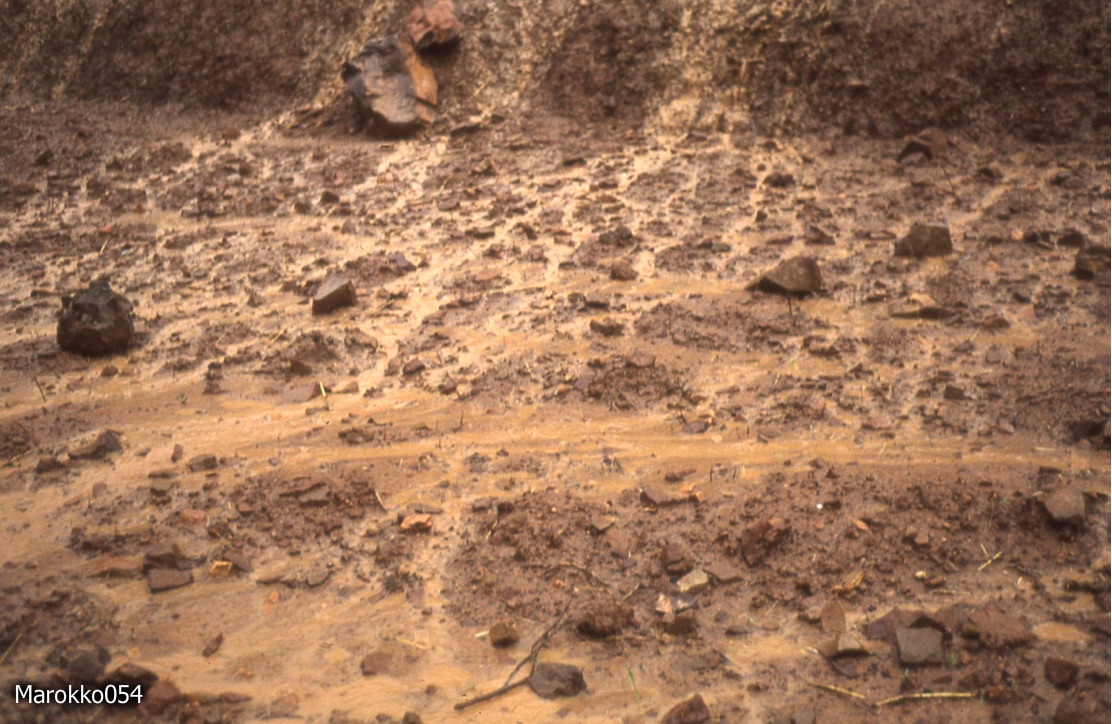Geomorphological Flickering
As environmental systems approach critical thresholds or tipping points, they may experience increased variability, which in the literature on critical environmental state transitions has been referred to as “flickering” (e.g., Lenton, 2011; Scheffer et al., 2012; Dakos et al., 2013). This is primarily the case for noisy, stochastic systems, which is not the case for many lab and mathematical models, but is emphatically so for most real-world environmental systems. As Dakos et al. (2013) put it:
Most work on generic early warning signals for critical transitions focuses on indicators of the phenomenon of critical slowing down that precedes a range of catastrophic bifurcation points. However, in highly stochastic environments, systems will tend to shift to alternative basins of attraction already far from such bifurcation points. In fact, strong perturbations (noise) may cause the system to “flicker” between the basins of attraction of the system’s alternative states. As a result, under such noisy conditions, critical slowing down is not relevant, and one would expect its related generic leading indicators to fail, signaling an impending transition.
My Kentucky colleague Daehyun Kim has led the way in expanding this sort of reasoning and analysis to the spatial domain (Kim and Arthur, 2014; Kim and Shin, 2016).
In a geomorphology context, it is not always intuitively clear to me how or why increased variability would occur near a tipping point, at least in terms of geomorphic phenomena. Thus I set out to work out how this could happen, both for my own benefit and so that I could hopefully explain it to students. I see five general ways this could happen. For each I give a brief explanation, an intuitive example of the phenomenon, and a geomorphological example.
1. Approach to Threshold.
As a geomorphic system approaches critical threshold, occasional large events or disturbances occasionally exceed the threshold, increasing variability. This is closest to the standard explanations in the critical transitions literature.
Intuitive example: A bucket of water getting near full. Large events (water into the bucket) will cause spillover, but for a while between these events evaporation or maybe a slow leak bring the level back down again until the bucket is so full (or infill events so frequent) that it overflows constantly. Until then, measurements of water level in the bucket or outflow from it will be highly variable.

Geomorphological example: Sedimentary basin approaching capacity. Autocompaction or minor erosion slows approach to complete filling. Sediment bypasses the basin during large events, but small events add more material.
2. Increased disturbance frequency.
Force-resistance thresholds may be exceeded due to increased force magnitudes, declining resistance, or a combination. They may also be exceeded due to increased frequency of disturbances (“force events”) that tax the ability of the system to recover to full resistance between events. Thus resistance is more variable and effects become more variable.
Intuitive example: Vegetation community disturbed often, but irregularly, so that succession can never proceed to a late successional community. Thus measurements of, e.g., biomass, NPP, community composition, richness, etc. will be highly variable.

Geomorphological example: A hillslope (e.g., on a lakeshore) that is undercut frequently enough to trigger new mass movements, so that the slope never becomes restabilized. Thu, slope morphology becomes more variable.
3. Rate changes in linked processes. Thresholds may be related to relative rates of linked processes (e.g., glacial accumulation vs. ablation), and could be exceeded due to rate changes in either or both processes. When the linked processes are both changing, but at an unsteady pace or variable rates, the location of the threshold itself may fluctuate, creating variability.
Intuitive example: A bank balance where income is increasing (or decreasing), but at variable pace, and so are expenses. Thus the break-even threshold varies from month to month in an unpredictable way.

Geomorphological example: Both weathering and erosion rates are increased or decreased (e.g., by climate change). However, the relative rates & pace of change vary. Thus the threshold between weathering- and transport-limitation varies, along with denudation rates.
4. Approach to storage capacity.
As storage capacity is approached, additional storage may become more unsteady as the trap or sink becomes less effective. Thus, for instance, small events may continue to add to storage, while large events result in a net decrease in storage.
Intuitive example: Moisture storage in a potted plant. When it is kept near saturation, large events (waterings) mostly splash out or drain right through, while small pourings are absorbed. Measurements of moisture output thus appear to begin “flickering” as the occasional splashouts and drainouts are superimposed on the more regular evapotranspiration losses.

Geomorphological example: A nebkha or field-edge dune begins to approach the maximum height dictated by vegetation. Small wind events add to sand storage in the dune, but large events result in net erosion. Thus measurements of dune sand storage or flux increase in variability.
5. Approach to use or transformation capacity.
Phenomenology similar to item 4 above, but in this case availability of a resource approaches maximum capacity of use by the system. Small inputs can still be fully utilized, but larger inputs cannot.
Intuitive example: Background nutrient levels in an aquatic ecosystem approach the maximum potential rate of uptake. Thus small inputs can be still be processed, but large inputs cannot be fully processed and have toxic effects. Measurements of, e.g., nutrient concentrations & fluxes, dissolved oxygen, community composition, etc. will become more variable.

Geomorphological example: Relatively slow inputs of deposited sediment to soil can be transformed by pedogenesis and incorporated into the soil, resulting in a cumulic (upbuilding) soil. More rapid inputs that exceed the rate of pedogenic transformation bury the soil, and pedogenesis is initiated in the deposited material, resulting in buried soil profiles or bisequal (or multisequal) soils. If sediment inputs are near the threshold, then small changes in deposition or pedogenesis rates (or small local spatial variations) can lead to divergent pedogenesis.
______________________________________________________________________
Dakos, V., et al., 2013. Flickering as an early warning signal. Theoretical Ecology 6: 309-317.
Kim, D., Arthur, M.A. 2014, Changes in community structure and species–landform relationship after repeated fire disturbance in an oak-dominated temperate forest. Ecological Research 29: 661–671.
Kim, D., Shin, Y.H., 2016. Spatial autocorrelation potentially indicates the degree of changes in the predictive power of environmental factors for plant diversity. Ecological Indicators 60: 1130-1141.
Lenton, T.M., 2011. Early warning of climate tipping points. Nature Climate Change 1: 201-209.
Scheffer, M., et al. 2012. Anticipating critical transitions. Science 338: 344-348.












